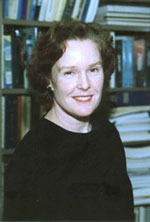Mission Update - August 2006
Results of Spitzer Space Telescope's Observations of the Impact at Tempel 1
by Lucy McFadden
Spitzer Space Telescope's imaging spectrometer and infrared camera, called the Peak-Up camera, observed comet Tempel 1 both before and after impact on July 4, 2005, covering the infrared spectral region between 5- to 35 microns. This is the region where thermal radiation dominates the spectrum. The brightness of the comet increased as time passed after the impact, as compared to before impact. In the spectra, emission features due to both crystalline and amorphous (glassy) silicates, amorphous carbon, carbonates, clay minerals (phyllosilicates), water in both the gaseous and solid states and sulfides were observed in the spectrum. Both comet Hale-Bopp and the material around the young stellar object named HD100546, have similarities to the spectrum of dust and gas released after the impact into Tempel 1. The presence of the observed mix of materials requires efficient methods of heating the glassy materials and cooling them to crystalline material and mixing high temperature with low temperature materials over large distances in the early protosolar nebula. The evolution of the protosolar nebula was more complex than a simple homogenous gas and dusty disk heated solely by the temperature of the sun.
For more data from the Spitzer Telescope:
Casey Lisse of Applied Physics Lab was the lead author and PI for the Spitzer Observations.














